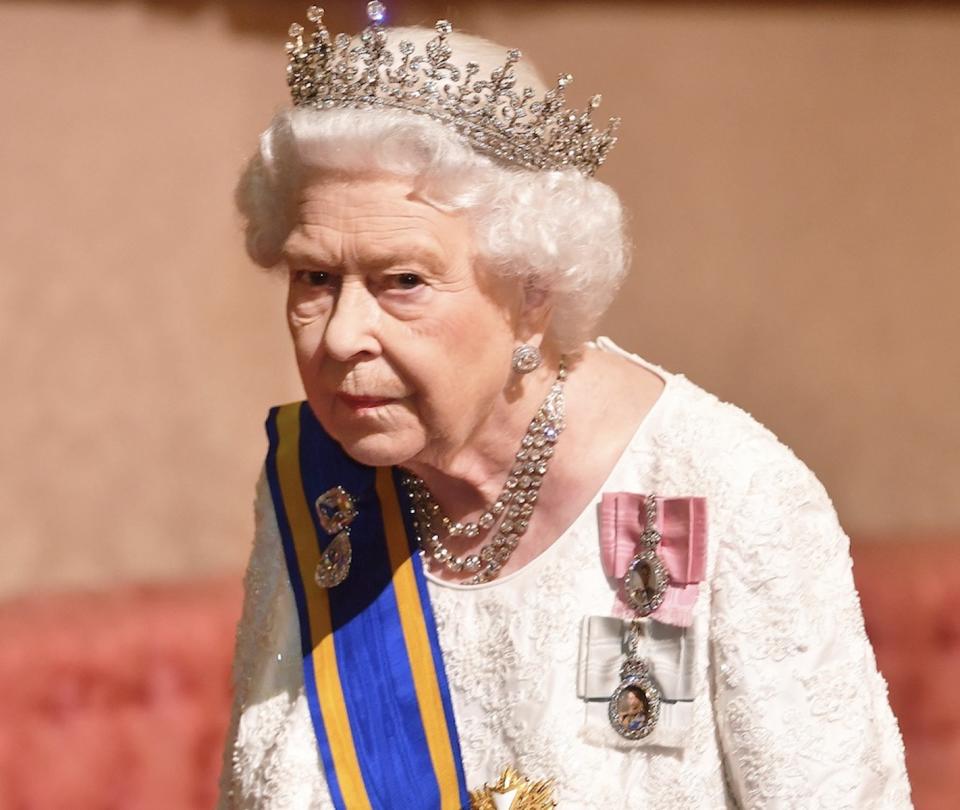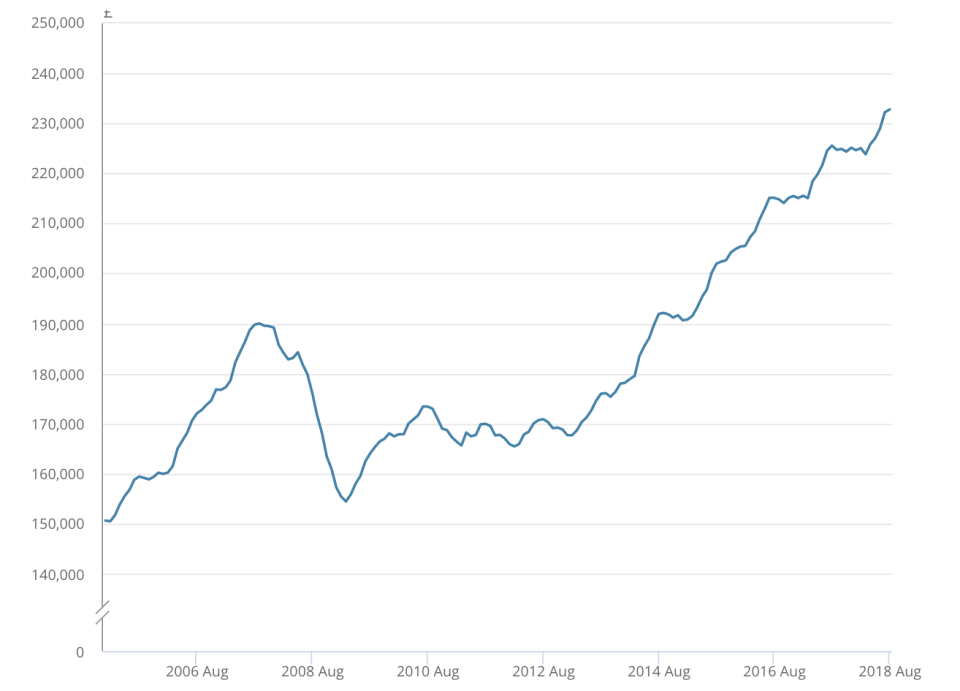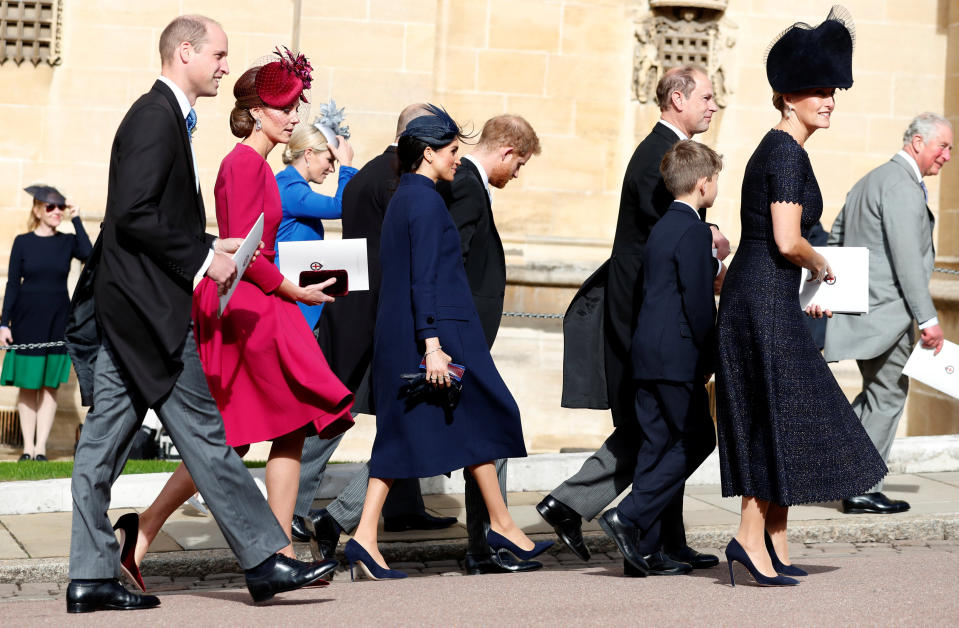Royal and aristocratic privilege is at the heart of the UK's housing crisis

The UK, like a number of other countries or states, has a housing crisis. But the biggest mistake that politicians can make is targeting private-owners. Why not turn to the issue of royalty and aristocracy who own a bulk of Britain’s land?
Property prices have continued to grow rapidly over the last 20 years. Even with the credit crisis causing prices to crash from 2008 to 2010, Londoners can now expect to pay nearly £500,000 ($648,000) for the average home. That’s despite the average salary hovering around £30,000. Meanwhile, the average property price in the UK stands at £233,000, according to the Office for National Statistics.

The level of home ownership has collapsed among young adults – saving for even a deposit requires years of living at home on a frugal budget, and in general owning your own property seems like a dream. Even the cost of moving home is eye-watering. Providing housing for the homeless is also not as simple as commentators assume.
The act of building homes isn’t simple either. The Federation of Master Builders said the planning system was too “complex, difficult and costly to navigate” and in August reported that house-building across half of England is slower than it was before the financial crisis, as 52% of councils reported fewer homes built last year than in 2007.
Is taxing the rich and foreign buyers the answer?
It is perhaps unsurprising that housing is a political football.
The issue of foreign-ownership and the privately wealthy, or at least those deemed to be (which is people who earn £80,000 a year), are easy targets. The UK government has upped the stamp duty or levies on second homes and foreign ownership over the last few years. After all, 13% of new homes in Britain’s capital were bought by non-residents between 2014 and 2016, according to York University research. Furthermore, King’s College London said in a study that the volume of homes being sold to overseas companies put up house prices by 2.1%.
But those levies aren’t enough to fix homelessness or seemingly out-of-control house prices. We haven’t really seen any huge change for would-be homeowners since former chancellor George Osborne slapped a new range of stamp duty tax around four years ago that targeted the rich.
While property prices did somewhat drop in London’s most lucrative locations, it is hardly going to open the doors to a whole new glut of potential buyers for that market. For example, a property that was worth £2m, falling to £1.5m is hardly going to help those struggling to get on the housing ladder.
But when that isn’t enough, politicians have been grasping at straws for a way to solve the crisis.
The fetishisation of nationalisation

There hasn’t been a greater example of grasping at straws than the latest alleged comments by Labour MP Lloyd Russell-Moyle documented today (4 November).
According to The Sun, Russell-Moyle told a Labour rally that:
“Let’s not just talk about council houses — let’s get those bloody private houses back into our hands. We need to develop a system that slowly over time takes property out of private hands and puts it into public hands. For example, why not give every council the first right of refusal with any houses put up for sale? And I don’t mean a former council house — I mean your private house.”
Looking to reverse former Conservative prime minister Margaret Thatcher’s Right to Buy Scheme from 1980 is usually seen as a life-long goal for the left-wing.
The Right to Buy Scheme allowed council housing tenants the right to purchase the home that they lived in for a discounted price. It gave the poorest in society the ability to get on the housing ladder and have an asset they own. However, while this has allowed some social mobility to the UK’s lowest earners, it has also led to a slump in available council housing for society’s most vulnerable. Government statistics has shown that the volume of council houses across England, Scotland and Wales dropped to just two million in 2017 and has now more than halved in the last 20 years.
So it’s probably not a shock to anyone following UK politics that a Labour MP, led by Jeremy Corbyn who advocates for a number of 1970s socialist ideals, is proposing a nationalisation of private property stock. After all, the Labour party has been pushing for greater nationalisation of the energy companies as well as railways and other forms of infrastructure.
But if they want to target the privileged and make sure more land and properties are available for the vulnerable, while also not stripping normal people of the homes they have paid for, why not look to royalty and the aristocracy?
The radical idea of looking at royal and aristocratic ownership

It’s a bit of a paradox in Britain where, as a society of capitalists, we have a monarchy and aristocrats that effectively own swathes of lands and properties that have been passed down within those generations only because of ordained bloodlines.
The idea of overhauling landowner and property rights for royalty and aristocrats is often a no-go area but if politicians are seriously proposing stripping private property away from everyday people who work their whole lives to own a property they can call their home, it may be worth outlining just how housing supply is restricted and controlled by the highest echelons of society.
For example, as Yahoo Finance UK’s Alanna Petroff points out, Queen Elizabeth II makes a lot of money generated from Crown Estate properties across the UK, which bring in hundreds of millions of pounds annually. The Queen also brought in an extra £17.3m from facilities management charges and property rental income in the latest financial year alone.
The Royal Family also privately owns land across the UK in the form of two duchies — the Duchy of Lancaster and the Duchy of Cornwall. The Duchy of Lancaster consists of 18,433 hectares of land in England and Wales and generated £20.2m in income during the last fiscal year. The Duchy of Cornwall consists of 53,000 hectares of land in 23 counties and brings in an average annual surplus in excess of £20m.
On top of this, the Queen owns the 8,000 hectare Sandringham House as well as the Scottish castle Balmoral and the 25,000 hectares of land surrounding it. The Crown Estate is of course enjoyed by all of the royalty in some way.
READ MORE: How do Royals make their money?
But that’s just skimming the surface — aristocrats who have titles and had land granted to them hundreds of years ago are still in control and profit from huge tracts of land.
The Sunday Times Rich List, one of the most comprehensive lists of its kind, outlined how Britain’s richest aristocrats are mainly wealthy because of inherited land and property.
The wealthiest aristocrat in Britain, who also ranks as the 10th richest person in the UK, is the 27-year-old Duke of Grosvenor. He’s worth £9.96bn, thanks to controlling his family’s empire of land and properties across much of London and the UK’s most lucrative areas. For example, his empire extends across 300 acres of the affluent Mayfair and Belgravia areas, as well as property in Oxford, Cheshire, and Scotland. The Rich List pointed out that his family’s private interests and holdings include nearly 165,000 acres of rural land, as well as farms and hotels.
The second richest aristocrat in Britain is Earl Cadogan with £6.7bn. His family’s estate includes 93 acres of London’s lucrative Kensington and Chelsea, which has been in the family for 300 years.
Then you’ve got Baroness Howard de Walden who, with her family, is the third richest aristocrat in Britain with a net worth of £4bn, thanks to (and you’re probably guessing what by now) property and land. She owns 92 acres in Marylebone, central London, as well as chunks of other land elsewhere.
You’ve also got Viscount Portman and family, The Earl of Iveagh and the Guinness family, and The Duke of Devonshire (to name but a few), who own huge amounts of land and property that keep them wealthy. It’s worth checking out the whole list, if you can bear it.
So while it is easier to target private owners, foreign owners, or those who have scrimped to get on the property ladder, maybe the most radical proposition is tackling a huge issue that’s been lying underneath our noses for centuries.
This is an opinion piece and does not necessarily reflect the stance of the rest of Yahoo Finance UK.

 Yahoo Finance
Yahoo Finance 
